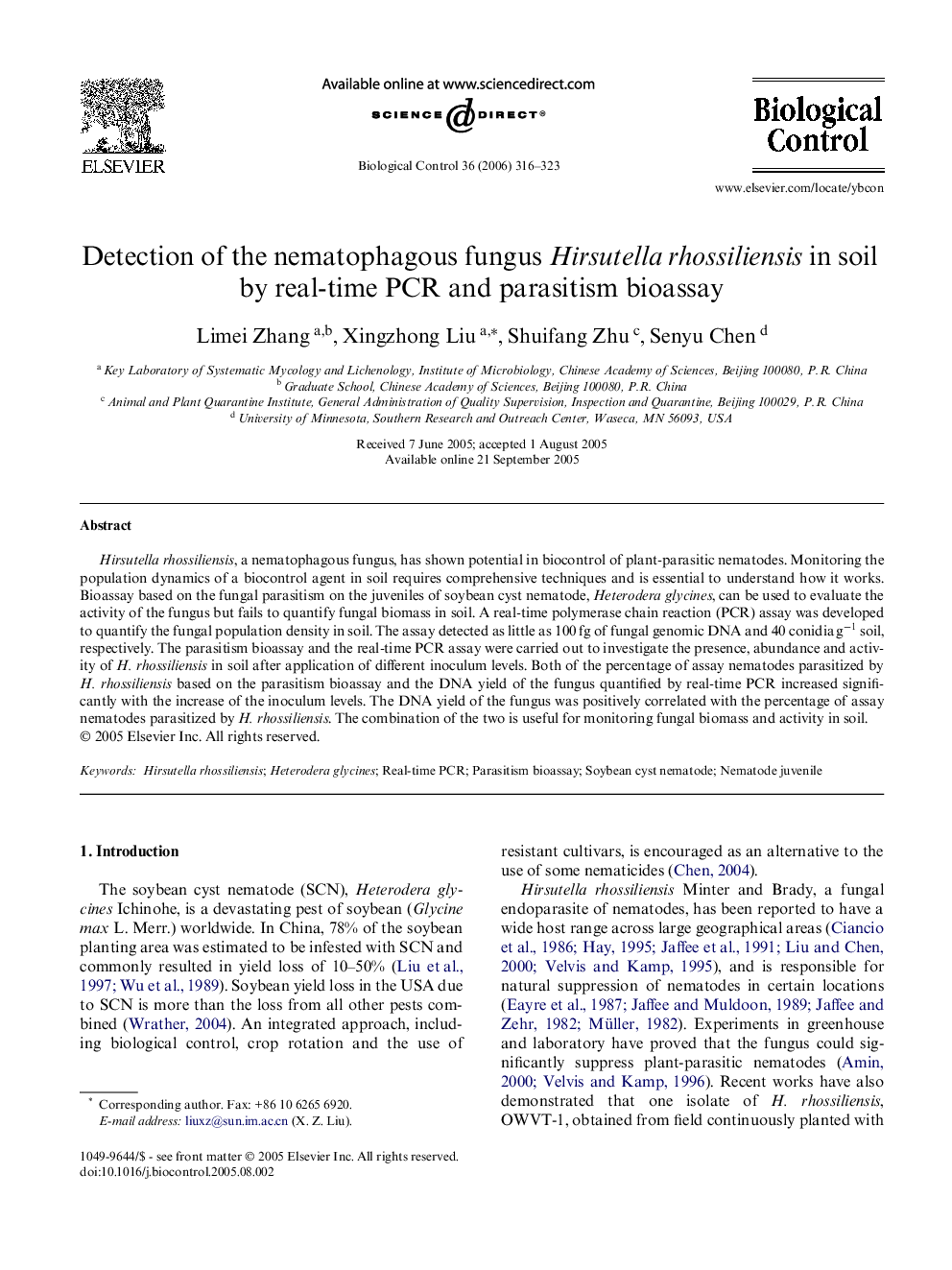| Article ID | Journal | Published Year | Pages | File Type |
|---|---|---|---|---|
| 4505473 | Biological Control | 2006 | 8 Pages |
Hirsutella rhossiliensis, a nematophagous fungus, has shown potential in biocontrol of plant-parasitic nematodes. Monitoring the population dynamics of a biocontrol agent in soil requires comprehensive techniques and is essential to understand how it works. Bioassay based on the fungal parasitism on the juveniles of soybean cyst nematode, Heterodera glycines, can be used to evaluate the activity of the fungus but fails to quantify fungal biomass in soil. A real-time polymerase chain reaction (PCR) assay was developed to quantify the fungal population density in soil. The assay detected as little as 100 fg of fungal genomic DNA and 40 conidia g−1 soil, respectively. The parasitism bioassay and the real-time PCR assay were carried out to investigate the presence, abundance and activity of H. rhossiliensis in soil after application of different inoculum levels. Both of the percentage of assay nematodes parasitized by H. rhossiliensis based on the parasitism bioassay and the DNA yield of the fungus quantified by real-time PCR increased significantly with the increase of the inoculum levels. The DNA yield of the fungus was positively correlated with the percentage of assay nematodes parasitized by H. rhossiliensis. The combination of the two is useful for monitoring fungal biomass and activity in soil.
